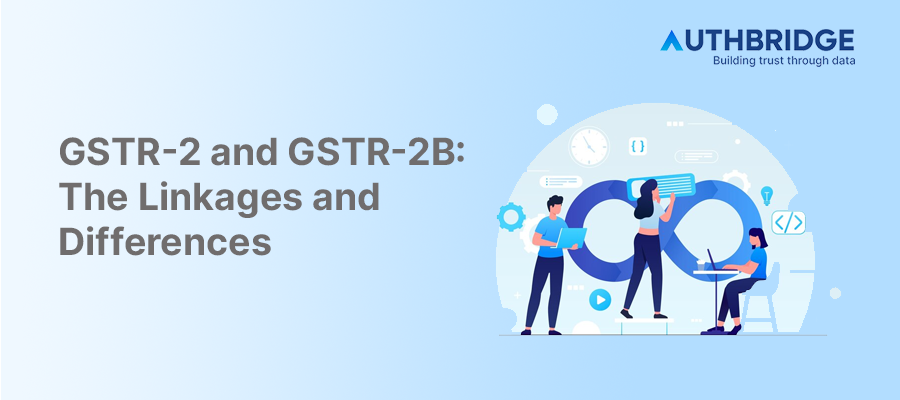GSTR-2 Vs. GSTR-2B: A Clear Guide To Understanding Each Form

1. Overview of GSTR-2A and GSTR-2B
Definition and Purpose
GSTR-2A and GSTR-2B are auto-populated GST returns that provide details of inward supplies. GSTR-2A is a dynamic return that updates in real-time as suppliers upload their GSTR-1 returns, offering a continuous view of input tax credit (ITC) eligibility. GSTR-2B, conversely, is a static monthly statement generated on the 12th day of the following month, summarizing ITC availability based on suppliers' GSTR-1 filings.
Generation Process
- GSTR-2A is automatically generated by the GST portal as suppliers file their GSTR-1 returns, reflecting the latest information on inward supplies.
- GSTR-2B is also auto-generated but remains unchanged for a particular month once it is prepared, providing a snapshot of ITC availability for that period.
2. Key Differences Between GSTR-2A and GSTR-2B
Dynamic vs. Static Nature
- GSTR-2A is dynamic, meaning its contents change as suppliers continue to file or amend their GSTR-1 returns.
- GSTR-2B is static, capturing the data as of a specific cut-off date each month, offering stability for ITC claims.
Generation Timing
- GSTR-2A updates in real-time, offering ongoing visibility into inward supplies.
- GSTR-2B is generated once a month, providing a fixed reference point for ITC claims.
Content and Detail Level
Both returns include details such as GSTIN of the supplier, invoice numbers, tax amounts, and ITC eligibility. However, GSTR-2B offers a consolidated view, making it easier for taxpayers to ascertain their monthly ITC entitlement.
3. Importance of GSTR-2A and GSTR-2B for Businesses
Reconciliation with Purchase Records
Businesses must reconcile their purchase records with both GSTR-2A and GSTR-2B to ensure accurate ITC claims. This process helps identify discrepancies early and facilitates timely rectification.
Impact on Input Tax Credit (ITC) Claim
Accurate reconciliation directly impacts the ITC claim process. GSTR-2B, in particular, aids businesses in determining the exact amount of ITC available for a specific period, ensuring compliance and optimizing cash flows.
4. How to Utilize GSTR-2A and GSTR-2B for ITC Reconciliation
Steps for Reconciliation
- Review GSTR-2A for real-time updates on inward supplies.
- Consult GSTR-2B for a monthly summary of ITC eligibility.
- Match both returns against purchase records.
- Identify and address discrepancies through communication with suppliers or adjustments in subsequent returns.
Addressing Discrepancies
Discrepancies should be resolved by consulting with suppliers to correct any errors in their GSTR-1 filings or by adjusting your own records to reflect accurate transactions.
5. Common Challenges and Solutions
Mismatch in ITC Claims
Discrepancies between recorded purchases and the information in GSTR-2A and GSTR-2B can lead to mismatches in ITC claims. Regular reconciliation and proactive communication with suppliers are key to resolving these issues.
Corrective Actions for Discrepancies
Corrections can be made in subsequent GST filings, ensuring that the ITC claimed aligns with the eligible credits as per GSTR-2A and GSTR-2B.
6. FAQs on GSTR-2A and GSTR-2B
1. What are GSTR-2A and GSTR-2B?
- GSTR-2A: It stands for Statement of Inward Supplies. This is a system-generated monthly statement that reflects the details of all your purchases (inward supplies) as reported by your suppliers in their GSTR-1, GSTR-5, and GSTR-6 forms.
- GSTR-2B: It stands for Statement of Inward Supplies with ITC Eligibility. This is also a monthly statement, auto-populated by the GST portal, reflecting the details of your purchases (inward supplies) with eligible Input Tax Credit (ITC) for the specific tax period.
2. What's the difference between GSTR-2A and GSTR-2B?
- Purpose: GSTR-2A provides you with information about all your purchases, regardless of whether the seller has claimed the ITC in their return or not. This helps you reconcile your purchases with your suppliers' records. GSTR-2B, on the other hand, focuses solely on purchases for which you can claim ITC in your GSTR-3B return.
- Dynamism: GSTR-2A is a dynamic statement, meaning it gets updated whenever your supplier revises their return. GSTR-2B is static and remains unchanged for the specific return period once generated.
- Reliability for ITC: While GSTR-2A can be used for reconciliation purposes, it cannot be solely relied upon for claiming ITC in your GSTR-3B. You should use GSTR-2B for this purpose, as it reflects the final picture of eligible ITC based on your suppliers' confirmed filings.
3. Can I claim ITC based on GSTR-2A?
No, you cannot solely rely on GSTR-2A for claiming ITC. While it provides information about your purchases, it doesn't guarantee the eligibility of the ITC. You should use GSTR-2B as the primary source for claiming ITC in your GSTR-3B return, as it reflects the confirmed eligible ITC based on your suppliers' final filings.
4. When should I use GSTR-2A?
GSTR-2A can be used for various purposes, including:
- Reconciling your purchase records with your suppliers' records
- Identifying any discrepancies in the reported information
- Following up with suppliers who haven't filed their GSTR returns, potentially impacting your ITC claim
- Analyzing your purchase patterns and identifying potential cost-saving opportunities
5. When should I use GSTR-2B?
- Filing your GSTR-3B return: GSTR-2B serves as the primary source for populating and claiming eligible ITC in your GSTR-3B return.
- Understanding the final picture of your eligible ITC: This statement reflects the confirmed ITC based on your suppliers' finalized returns, ensuring accurate tax filing.
6. Where can I access GSTR-2A and GSTR-2B?
Both GSTR-2A and GSTR-2B can be accessed and downloaded through the GST portal (https://www.gst.gov.in/) using your login credentials.
Remember: Understanding the differences and functionalities of GSTR-2A and GSTR-2B is essential for accurate record-keeping, reconciliation, and claiming eligible ITC in your GST returns.
Category

Abhinandan Banerjee
(Associate Manager - Marketing)
Abhinandan is a dynamic Product and Content Marketer, boasting over seven years of experience in crafting impactful marketing strategies across diverse environments. Known for his strategic insights, he propels digital growth and boosts brand visibility by transforming complex ideas into compelling content that inspires action.



